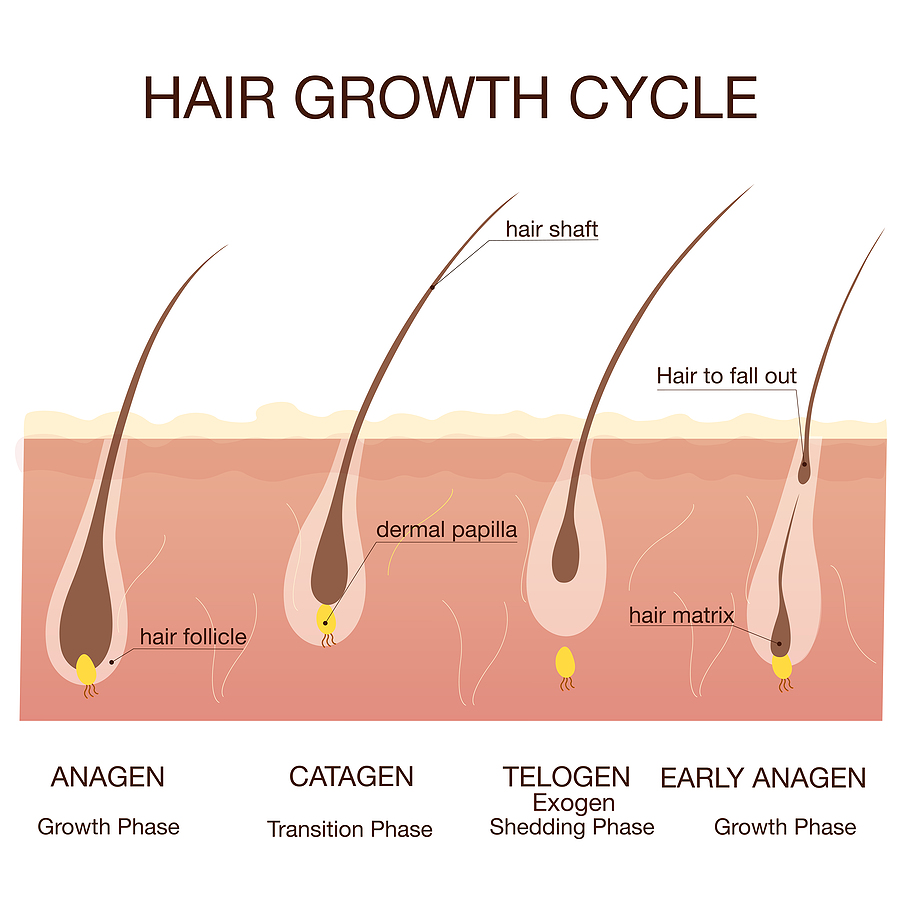Electrolysis: What is Mistaken Regrowth?

Electrolysis: What is Mistaken Regrowth?
In our June blog answers were introduced – on what true regrowth of hair really is. In this month’s blog we are exposing what different scenarios cause mistaken regrowth of hair.
Electrologists must forever deal with the mistaken regrowth issue. Most clients are convinced that all new hairs in the treatment area are regrowth. However nearly all such new hairs are only false regrowth: hair that clients perceive as regrowth but really emerged naturally and were never treated!
Replacement Hairs
Most false regrowth is just new anagen hair replacing earlier-shed “telogen” hair. Unseen resting follicles that finally generate new hairs weeks after treatment – produce hairs that appear to be regrowth. Such hairs, of course, are not true regrowth because they were never treated. In all areas of the body, resting follicles and telogen hairs are plentiful.
Unshaven Hairs
In unshaven areas you see only about 60 percent of the hairs. Many telogen follicles are empty and some early anagen hairs lie under the skin. You see only exposed anagen and telogen hairs. Within a few days after treatment the concealed early anagen hairs surface. Then successively for several months the resting follicles produce new anagen hairs. All these never treated hairs are false regrowth.
Shaved Hairs
Shaving reduces visible hairs to only 20 to 30 percent. You still have empty resting follicles and subcutaneous early anagen hairs. However, with shaving, nearly all of the telogen (and catagen) hairs are rendered totally invisible. Only the fast growing anagen hairs are seen.
Telogen hairs grow slowly. Even weeks after shaving, most telogen hairs remain at skin level. They are invisible and, therefore, impossible to treat. Eventually, the shaved over telogen follicles produce fast-growing anagen hairs. Thus, false regrowth blossoms and the client will blame the Electrologist.
Some women shave between treatments, consequently they are unaware of the real amount of hair present.
Tweezed Hairs
Tweezing or waxing produces a veritable minefield of lurking follicles. All stages of hairs are uprooted and only the earliest anagen hairs survive. Depending on the client’s skill with her tweezers, only 5 to 10 percent of the hairs are seen.
Resting telogen follicles produce new hairs on schedule. However, the tweezed anagen follicles must first heal and then generate “new” anagen hairs. Thus, the period of false regrowth is greatly extended. If the client tweezes incessantly during the entire electrolysis procedure, then the client will have to be prepared to discuss false regrowth for the duration!
Undergrowth
clients that shave are only aware of the fast-growing terminal hairs. Vellus hairs and small accelerating hairs in the same area, grow much slower. Thus, frequent shaving conceals the undergrowth of vellus and accelerating hairs.
You start work on a client, but she continues to shave between treatments to conceal the fast-growing hairs. Finally, after several months of treatment, she stops shaving because the area seems under control. Within about 6 weeks, however vellus and small accelerating hairs begin to appear – often in great numbers. The client may complain about the sudden “regrowth.” However, these hairs are really false regrowth.
Medical Problems
An underlying medical problem sometimes cause burgeoning hair growth (beginning to grow or increase rapidly, flourishing) especially on the face. These hairs are often mistakenly seen as regrowth.
Several ailments cause systemic imbalances that convert residing vellus hairs into terminal hairs. Surgical removal of the ovaries and certain prescriptions may induce such sprouting. Even stopping medication such as birth-control pills can cause hormone imbalances that produce unwanted hairs.
Conclusion
True regrowth emerges as ingrown or embedded hair. Shaving and tweezing cause false regrowth. Post-puberty body hair is almost always stable, but facial hair often increases with age. Accumulated hair can be eradicated, but afterward the client may need 1 – 2 treatments per year to maintain the area.
Face
If the client is consistent and keeps regular appointments, the face should dramatically improve in 6 – 8 months. If not, there may be an underlying medical problem. The emphasis is on consistency of treatments. Inconsistency delays treatment success and greatly prolongs the period of false regrowth.
